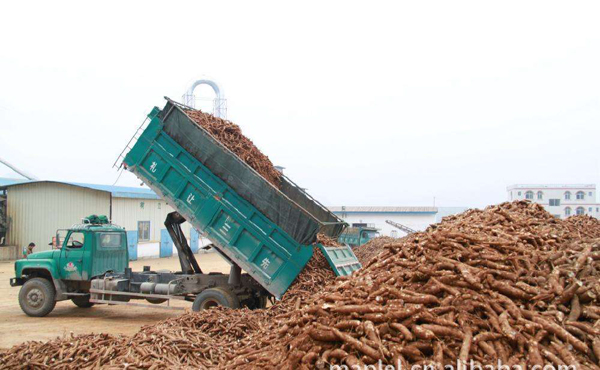Thailand: Cassava Waste Management

Cassava Waste Management
In Thailand, collaboration between farmers and cassava starch industries spanning over 50 years has led to significant improvements in production standards and environmental management. Key aspects of waste management and environmental sustainability include:
- Environmental Management System: Cassava starch factories have adopted environmental management systems to address the substantial organic waste generated during production. These systems align with international standards such as GMP, HACCP, and ISO14000, reducing environmental impact.
- Biogas System: To address the high volume of wastewater produced, cassava starch factories have introduced biogas systems for wastewater treatment. Biogas serves as renewable energy and reduces electricity costs while improving the local environment.
- Water Recycling: Water is a critical resource in cassava starch production. Factories have explored the use of treated water from wastewater treatment plants for cassava root washing, reducing water consumption. Treated water and sludge are also utilized for plant irrigation due to their mineral content beneficial for plant growth.
Current Status of Cassava Bio-waste Management:
In 2019, Thailand produced 33 million tons of cassava, with various bio-wastes generated, including leaves, stems, rhizomes, cassava peel, and cassava pulp. These bio-wastes have different utilization options:
- Cassava leaves can be used as an ingredient in animal feed.
- Cassava stems and rhizomes can be converted into biomass or charcoal for cooking or power generation.
- Wastewater from cassava starch processing is used as substrate in biogas systems.
- Cassava peel is utilized in mushroom cultivation.
- Cassava pulp can be mixed into animal feed or used as raw material for bioethanol and biogas production.
Current Status of Biogas Production and Utilization:
Thailand produces approximately 1,405 million cubic meters of biogas annually, which is utilized for electricity, heat, and compressed biogas (CBG). Various biogas technologies are employed across sectors, including food and beverage, agriculture, and ethanol production.
Government Policy:
The Ministry of Energy's policy in AEDP 2018-2037 aims to increase the proportion of renewable and alternative energy, including biogas, in the country's energy consumption to 30% by 2037. This policy supports the development of biogas technology by offering subsidies, tax incentives, and other benefits. It also involves updating regulations to ensure systematic operation and development, with targets set for biomass power plant and biogas from wastewater capacities.
Opportunities, Barriers, and Driving Forces from Government Policy:
Government support serves as a driving force for biogas technology adoption, offering knowledge, subsidies, tax discounts, and incentives to promote implementation. Updating regulations can lead to systematic development and operation. Increased knowledge sharing can also attract more individuals interested in biogas production, contributing to its growth.
SWOT Analysis
The SWOT analysis for biogas technology reveals strengths in waste availability and large-scale implementation but highlights challenges related to knowledge sharing and reliance on foreign technologies.
A proposal for biogas technology development emphasizes the utilization of agricultural waste, wastewater, and energy crops to achieve net-zero greenhouse gas emissions by 2065. Collaboration between government and communities, supportive laws, infrastructure development, and research are crucial for achieving these goals.
